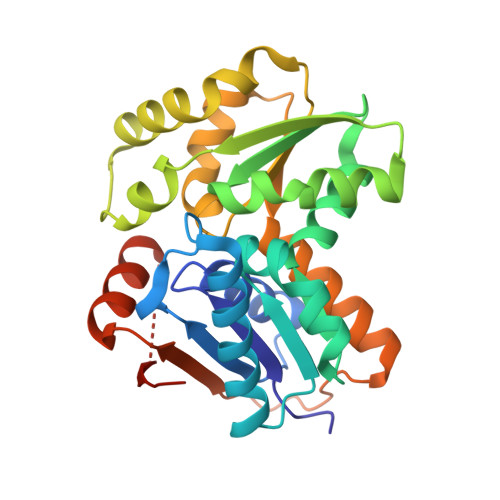Substrate-Induced Conformational Changes in Bacillus subtilis Glutamate Racemase and Their Implications for Drug Discovery
Ruzheinikov, S.N., Taal, M.A., Sedelnikova, S.E., Baker, P.J., Rice, D.W.(2005) Structure 13: 1707-1713
- PubMed: 16271894
- DOI: https://doi.org/10.1016/j.str.2005.07.024
- Primary Citation of Related Structures:
1ZUW - PubMed Abstract:
D-glutamate is an essential building block of the peptidoglycan layer in bacterial cell walls and can be synthesized from L-glutamate by glutamate racemase (RacE). The structure of a complex of B. subtilis RacE with D-glutamate reveals that the glutamate is buried in a deep pocket, whose formation at the interface of the enzyme's two domains involves a large-scale conformational rearrangement. These domains are related by pseudo-2-fold symmetry, which superimposes the two catalytic cysteine residues, which are located at equivalent positions on either side of the alpha carbon of the substrate. The structural similarity of these two domains suggests that the racemase activity of RacE arose as a result of gene duplication. The structure of the complex is dramatically different from that proposed previously and provides new insights into the RacE mechanism and an explanation for the potency of a family of RacE inhibitors, which have been developed as novel antibiotics.
Organizational Affiliation:
Krebs Institute for Biomolecular Research, Department of Molecular Biology and Biotechnology, University of Sheffield, Firth Court, Western Bank, Sheffield S10 2TN, United Kingdom.















